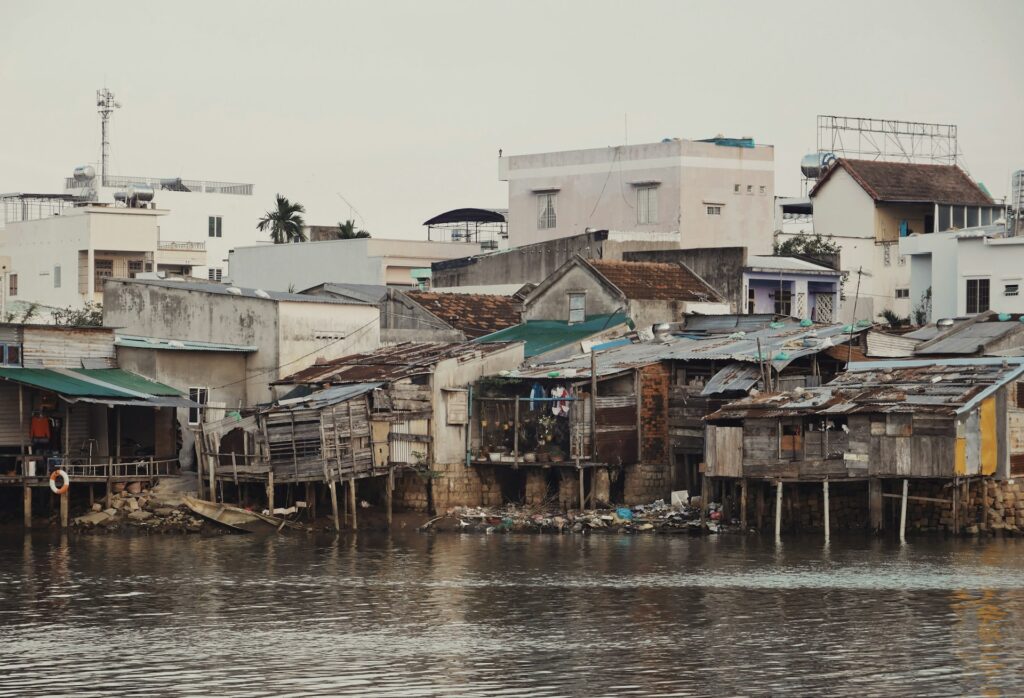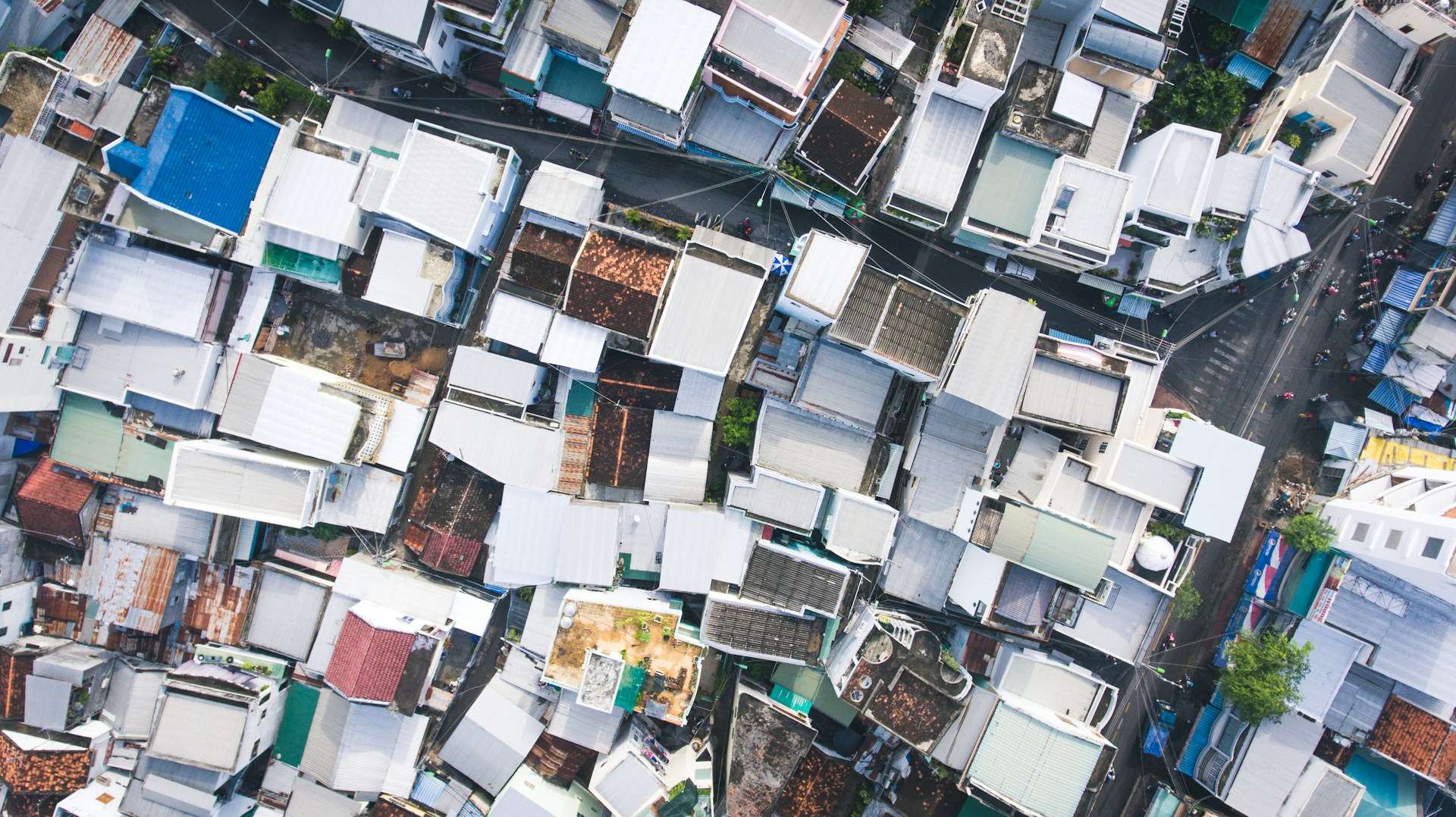Policy Recommendations for Sustainable Slum Solutions
Slum villages are a universal problem affecting over one billion people in urban areas globally.
As shelters, and sources of income for many, slums have features that include; substandard infrastructure, cramped living conditions and social injustice.
Such opportunities call for progressive policies that meet the current needs while laying foundation brick for sustainable development.
This blog outlines key policy recommendations under three headings: A comprehensive approach in the improvement of living standards, empowering local communities, monitoring and evaluation and systematic urban development.
1. Improving Living Standards with Essential Services
Being the focal factor for slum sustainability, the delivery of basic services for the consumption of residents with the least susceptibility to risks is the key essence.
Governments and urban planners faces the challenge of delivering housing, sanitation, clean water, healthcare, and education for all the people living in such areas.
Key Strategies:
1. Affordable Housing Initiatives:
The government can use policies that will facilitate low-cost housing, engage in partnership with private developers to construct low-cost and easy to maintain houses.
Frequently, there are slum upgrades for instance construction of multi-storey units where the common people live in improper structures but deliver good structures for living.
2. Infrastructure Upgrades:
Some simple developmental facilities like proper drainage and sewerage, good supply of electricity and ways of managing wastes have the capacities of improving the standards of living.
Some of these technologies include; use of solar lighting or decentralized wastewater treatment systems which could be incorporated into slum development master plans.
3. Health and Education Access:
Health should be policies such as mobile clinics, vaccination campaigns, and health education in the area to arrest diseases commonplace in congested slums.
At the same time, spending on local schools or vocational training and digital skills development can enable the residents to search for improved conditions.
In this way, the issues that require current attention are seen as understating the physical, social, and economic security of residents and building the foundations of the future.

2. Fostering Community-Led Development
Meaningful implementation of slum policies therefore requires one to involve the residents of the slum so that they can contribute together with architects and policy makers.
People understand their issues best and should be in a position to front and develop the solutions.
Key Strategies:
1. Participatory Urban Planning:
A review of the implications of Global Partnership for develop shows that governments must incorporate those in the slums in their decision-making processes.
Community involvement, which involves the residents working hand in glove with local authorities, NGOs and urban planners, ensures that redevelopment strategies capture the people’s needs thus ownership of the resultant redevelopment objectives in terms of the protection and sustenance of community identity and economic base.
2. Secure Tenure Rights:
Resident title of land or housing is critical in boosting stability and investments in improving the homes of slum dwellers.
Secure tenure can also eliminate forced evictions whereby those people experiencing high levels of urban poverty are further affected.
3. Microfinance and Cooperative Models:
The residents can participate in improved financing of homes and or undertake micro-finance enterprises through government policies on financial inclusion.
In countries like Uruguay and Thailand, residents’ self-organized organisations that work collectively towards the building up of houses are cooperative housing models.
Community-led development enriches policy relevance besides promoting social unity and independence in slum regions.
3. Enabling Systemic Urban Transformation
Whereas, emergency measures focus on treating the ailment of slums, sustainable solutions include changes in the urban development, political economy.
Governments must get serious in accepting long-term approaches to fostering inclusive cities, and start eliminating causes of slums.
Key Strategies:
1. Integrating Slums into City Plans:
Policies on provision of utility services and other urban amenities should be directed towards integrating the living areas of the slums into the master city plan; this implies the view that the slums are actually part of the formal arrangement of the city.
As for the model, other cities, like Medellin, Colombia, have tried the integration of slum areas by expanding transportation and utilities.
2. Urban Land Reforms:
Housing critics therefore assert that many slums are a result of unequal land distribution and the zoning laws.
Social published governments should transform its land management strategies to allow for appropriate spaces for Low income settlements and the informal production sector in its cities, for more proportionate urbanization.
3. Economic Empowerment Programs:
From a policy point of view, integration in skills development, micro entrepreneurial support and the linkage to the formal economy is recommended for employment generation within the urban informal settlements.
Other forms of investments that could help boost community economies include investing in; recycling industry, craft industry as well as local service industries.
4. Resilience to Climate Change:
Too many of them are situated at the coastal or flood plains, in regions vulnerable to landslides and other aspects of climate change.
Disaster risk reduction, climate change adaptations and designs for sustainable urban systems and spaces should be the focus of current and future urban policies; these include rain water capturing systems and urban greenery.
Systemic change must involve efforts in the government’s policy, private sectors, and international organizations, funding that must be sustained over long periods, and tracking to guarantee sustainability.
Conclusion
Making any change and especially one for the benefit of the inhabitant of the slum has to be effected in the short term while at the same time preparing the ground for the long term structural change.
In enhancing living quality and endowing communities and governance structures of urban settings, policies and practices can assist in the eradication of slums into socio-economic productive constituencies.
While the problem of slum proliferation becomes even more acute on the background of the growing trend in global urbanization, slums are an opportunity to develop new concepts and strategies aimed at achieving fair planning of cities.
Inclusive policies and sustained commitment to advancing equity can make our cities the places where everyone wants to live and everyone can succeed.
Also read: Urban Development and Housing in Nepal: Challenges and Opportunities

